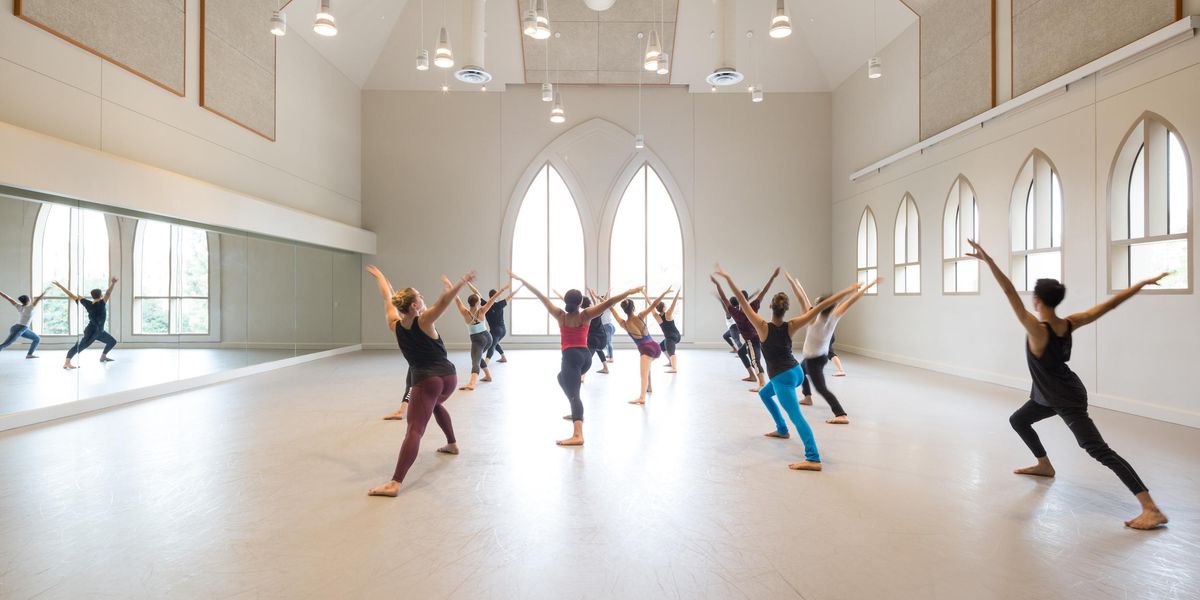Reasons to See Student Performances
Student showings can be exciting when you see through to the individuality or promise of a particular dancer. They also give us some idea of how students are being trained and what aesthetics they are being introduced to. Juilliard and the School of American Ballet have produced very public student concerts for years. But recently I’ve also seen performances by The New School and the ABT Studio Company, which is part of the JKO School.
Although I have my doubts about the wisdom of subjecting students to paying audiences (as opposed to getting their performing experiences on their own campuses), I enjoy seeing the range of experience: Some students look like a deer caught in the headlights onstage, while others look like they were born to the stage.
At the Eugene Lang College, New School, concert in the Ailey space, a tall boy named Anthony Carlson had a sense of purpose in Neil Greenberg’s first-year repertory class that made him stand out. In Juliana May’s piece (unfortunately and inexplicably titled The Excrement) the dancers seemed to be aimlessly wandering around in the beginning, but by the end, they were really inside it and letting their personalities out (although Cait Vogt was totally full-out, mind and body, from the start).
Lang College students in a piece by Juliana May. Photo by Frank Mullaney, Courtesy Lang
A student named Robert Maynard created and performed his own captivating, gender-bending solo that sprinkled transvestite stereotypes with inventive movement.
Maynard in his
Fase, Six Abbreviated Movements to the Music of Nicki Minaj. Photo by Frank Mullaney, Courtesy Lang
And at ABT Studio Company, which performed Pace University’s Schimmel Center for the Arts, many dancers caught the eye. Michaela DePrince aced the bold, sexy style of Susan Jaffe’s very contemporary We Insist. And Shu Kinouchi, who appeared in three pieces, blew everyone away with his blast of energy and joy.
Michaela DePrince in Jaffe’s
We Insist. Photo by Erin Baiano, Courtesy ABT Studio Company.
I’d like to see more of all these dancers in the future. But you never know. Although someone’s output in the teen years can be an indication of the level they’ll attain later on, anything can happen. The degree of persistence—the ability to push through all kinds of financial and psychological obstacles—is also a big factor. And in universities like The New School, talented performers may well choose other career paths.
What these showings also reveal is the aesthetic values of each school. The ABT Studio company performed classical works as well as a charming suite of Agnes de Mille bits for Broadway. They gave strong performances in works by Anton Dolin and two pieces by Susan Jaffe. (A brief , balleticized tango was the other one.)
At The New School, the expectations were less technical and more conceptual, including a remash of some of Trisha Brown’s structures and phrases. I think the students learned that gesture and pedestrian movement can be part of a dance vocabulary—not to mention the almost mathematical way that Trisha has of organizing movement.
Lang College students performing restagings of concepts by Trisha Brown. Photo by Frank Mullaney, Courtesy Lang
What’s nice is that, in all cases, I saw the students being challenged, but I never felt they were trying to be something they are not.




